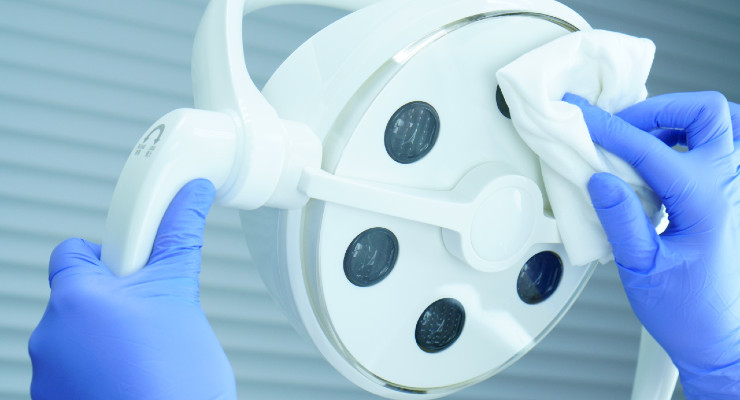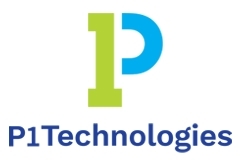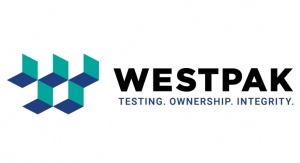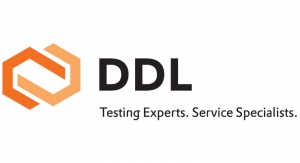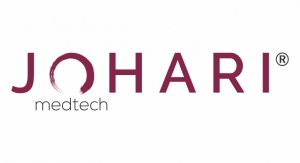Ryan Hoobler, VP of Engineering, Code Corporation04.29.21
One of the most fundamental lessons the general public learned from COVID-19 is that cleanliness can be serious business. The public was continuously urged to not only wash their hands and use hand sanitizers, but to also disinfect their homes, cars, and anywhere else subjected to physical contact. This wave of activity and awareness was intended as a widespread infection control campaign waged against the global pandemic. What most people are not aware of, however, is there have been fierce infection control battles waged for decades in healthcare facilities. While there is always collateral damage, some of the most surprising casualties emerged in the form of medical equipment and electronic devices that are used in hospitals and clinics. The majority of these patient-care tools are housed in plastic.
In 2003, the U.S. Center for Disease Control (CDC) published Guidelines for Environmental Infection Control in Health-Care Facilities. The guidelines, which are still used today, explained that microorganisms, such as viruses and bacteria, are transferred from environmental surfaces to patients mostly by hand contact with a surface. Although properly washing hands is important to limit such transfers, appropriately cleaning and disinfecting environmental surfaces is, “fundamental in reducing their potential contribution to the incidence of healthcare-associated infections.”
The early 2000s also saw a burst of innovation with clinics and hospital rooms seeing more wired and wireless devices used in monitoring and diagnosing patients as well as in the organization and hospital workflow to reduce errors and increase efficiencies, such as barcode scanners, computers, tablets, and smartphones. This is where the tech industry learned some hard lessons. Many companies found that even after spending millions of dollars on research and development to ensure their devices would solve critical issues for physicians and nurses, they would see their products shipped back to them in as little as a few months in little more than piles of scrap. The harsh chemicals—which have evolved over the years—that the healthcare staff was using would literally destroy the plastics and often corrode the metals that the devices were made of.
Rational Approach to Disinfection
The 2008 CDC Healthcare Infection Control Practices Advisory Committee Guideline for Disinfection and Sterilization in Healthcare Facilities states, “...more than 30 years ago, Earle H. Spaulding devised a rational approach to disinfection and sterilization of patient-care items and equipment. This classification scheme is so clear and logical that it has been retained, refined and successfully used by infection control professionals and others when planning methods for disinfection or sterilization.”
Aside from items such as surgical instruments that are required to be sterilized due to a high risk for infection if they are contaminated with any microorganism, there are three levels of disinfection for devices and surfaces for safe use. These disinfection levels are “low-level,” “intermediate-level,” and “high-level.” The CDC's basis for these levels is microorganisms can usually be grouped according to their innate resistance to a spectrum of physical or chemical germicidal agents. This information, coupled with the instrument/surface classification, determines the appropriate level of “terminal disinfection” needed for a device.
The guidelines outline general cleaning strategies for patient-care areas, which depend on the number and types of microorganisms present on environmental surfaces, and are influenced by the following factors:
Strategies for cleaning and disinfecting surfaces in patient-care areas take into account:
As such, devices that are often touched and used such as a blood pressure cuff, barcode scanner, or computer mouse (and are found in almost every hospital room) need nearly constant cleaning. These products are often efficiently made of plastics such as polycarbonate/Acrylonitrile butadiene styrene (PC/ABS). Ethyl alcohol or isopropyl alcohol in high concentrations is often used to disinfect. The problem is that these and many other chemical cleaners can cause discoloration, swelling, hardening, and cracks in the plastic. This is because these types of plastic have an inherently loose internal structure with long polymer strings that chemicals can easily penetrate. The plastic breaks down, starting with microscopic cracking. Soon flakes and bigger cracks emerge and can be seen radiating out from the screw boss, for example, exposing the internal electronics.
Additionally, bleach-based cleaners are known to corrode metal, which is a problem for devices with charging pins, batteries, or chargers.
Antibacterial Plastic
The plastics used by the tech industry have evolved over the years. One approach hinged on an anti-bacterial plastic. This strategy usually involved coating the plastic or introducing an additive ingredient into the plastic during the manufacturing process in an effort to hinder bacterial growth.
Some key challenges with this approach are first, when things are added to plastics, they often degrade the overall integrity of the plastic. Second, antimicrobials for plastics are considered pesticides and must be registered by U.S. Environmental Protection Agency (EPA) or the FDA in the case of medical devices. And finally, even if plastics are coated or injected with antimicrobial additives, that does not eliminate the need to clean the device. Regularly cleaning, disinfecting, and removing dust and debris from equipment is required to ensure patient safety. Hospitals do not want to simply inhibit microbial growth, they want to eliminate (i.e., kill) all harmful bacteria and viruses. Besides, according to the CDC, “No evidence is available to suggest that use of these products will make consumers and patients healthier or prevent disease. No data support the use of these items as part of a sound infection-control strategy…”
Disinfectant-Ready Plastic
The most effective solution is a class of what is known as disinfectant-ready plastic, which has a very tight, densely packed polymer structure that does not allow disinfectant cleaners to penetrate. This disinfectant-ready chemical composition helps maintain the plastic's overall integrity, allowing devices to withstand multiple cleanings per day with very harsh disinfectant chemicals for years on end.
Disinfectant-ready plastic is a fairly recent development, which came to the market at a crucial time. Society has become aware of the need to be more vigilant about cleaning in an effort to combat COVID-19. Not only are disinfectant-ready plastics being used in hospitals globally, they are also starting to be seen in retail, supply chain, manufacturing, and other applications where there is a high frequency of hand-touched items and surfaces. In the war against viruses, humans have a new competitive edge.
In 2003, the U.S. Center for Disease Control (CDC) published Guidelines for Environmental Infection Control in Health-Care Facilities. The guidelines, which are still used today, explained that microorganisms, such as viruses and bacteria, are transferred from environmental surfaces to patients mostly by hand contact with a surface. Although properly washing hands is important to limit such transfers, appropriately cleaning and disinfecting environmental surfaces is, “fundamental in reducing their potential contribution to the incidence of healthcare-associated infections.”
The early 2000s also saw a burst of innovation with clinics and hospital rooms seeing more wired and wireless devices used in monitoring and diagnosing patients as well as in the organization and hospital workflow to reduce errors and increase efficiencies, such as barcode scanners, computers, tablets, and smartphones. This is where the tech industry learned some hard lessons. Many companies found that even after spending millions of dollars on research and development to ensure their devices would solve critical issues for physicians and nurses, they would see their products shipped back to them in as little as a few months in little more than piles of scrap. The harsh chemicals—which have evolved over the years—that the healthcare staff was using would literally destroy the plastics and often corrode the metals that the devices were made of.
Rational Approach to Disinfection
The 2008 CDC Healthcare Infection Control Practices Advisory Committee Guideline for Disinfection and Sterilization in Healthcare Facilities states, “...more than 30 years ago, Earle H. Spaulding devised a rational approach to disinfection and sterilization of patient-care items and equipment. This classification scheme is so clear and logical that it has been retained, refined and successfully used by infection control professionals and others when planning methods for disinfection or sterilization.”
Aside from items such as surgical instruments that are required to be sterilized due to a high risk for infection if they are contaminated with any microorganism, there are three levels of disinfection for devices and surfaces for safe use. These disinfection levels are “low-level,” “intermediate-level,” and “high-level.” The CDC's basis for these levels is microorganisms can usually be grouped according to their innate resistance to a spectrum of physical or chemical germicidal agents. This information, coupled with the instrument/surface classification, determines the appropriate level of “terminal disinfection” needed for a device.
The guidelines outline general cleaning strategies for patient-care areas, which depend on the number and types of microorganisms present on environmental surfaces, and are influenced by the following factors:
- Number of people in the environment
- Amount of activity
- Moisture levels
- Presence of material capable of supporting microbial growth
- Rate at which organisms suspended in the air are removed
- Type of surface and orientation [i.e., horizontal or vertical]
Strategies for cleaning and disinfecting surfaces in patient-care areas take into account:
- Potential for direct patient contact
- Degree and frequency of hand contact
- Potential contamination of the surface with body substances or environmental sources of microorganisms (e.g., soil, dust and water)
As such, devices that are often touched and used such as a blood pressure cuff, barcode scanner, or computer mouse (and are found in almost every hospital room) need nearly constant cleaning. These products are often efficiently made of plastics such as polycarbonate/Acrylonitrile butadiene styrene (PC/ABS). Ethyl alcohol or isopropyl alcohol in high concentrations is often used to disinfect. The problem is that these and many other chemical cleaners can cause discoloration, swelling, hardening, and cracks in the plastic. This is because these types of plastic have an inherently loose internal structure with long polymer strings that chemicals can easily penetrate. The plastic breaks down, starting with microscopic cracking. Soon flakes and bigger cracks emerge and can be seen radiating out from the screw boss, for example, exposing the internal electronics.
Additionally, bleach-based cleaners are known to corrode metal, which is a problem for devices with charging pins, batteries, or chargers.
Antibacterial Plastic
The plastics used by the tech industry have evolved over the years. One approach hinged on an anti-bacterial plastic. This strategy usually involved coating the plastic or introducing an additive ingredient into the plastic during the manufacturing process in an effort to hinder bacterial growth.
Some key challenges with this approach are first, when things are added to plastics, they often degrade the overall integrity of the plastic. Second, antimicrobials for plastics are considered pesticides and must be registered by U.S. Environmental Protection Agency (EPA) or the FDA in the case of medical devices. And finally, even if plastics are coated or injected with antimicrobial additives, that does not eliminate the need to clean the device. Regularly cleaning, disinfecting, and removing dust and debris from equipment is required to ensure patient safety. Hospitals do not want to simply inhibit microbial growth, they want to eliminate (i.e., kill) all harmful bacteria and viruses. Besides, according to the CDC, “No evidence is available to suggest that use of these products will make consumers and patients healthier or prevent disease. No data support the use of these items as part of a sound infection-control strategy…”
Disinfectant-Ready Plastic
The most effective solution is a class of what is known as disinfectant-ready plastic, which has a very tight, densely packed polymer structure that does not allow disinfectant cleaners to penetrate. This disinfectant-ready chemical composition helps maintain the plastic's overall integrity, allowing devices to withstand multiple cleanings per day with very harsh disinfectant chemicals for years on end.
Disinfectant-ready plastic is a fairly recent development, which came to the market at a crucial time. Society has become aware of the need to be more vigilant about cleaning in an effort to combat COVID-19. Not only are disinfectant-ready plastics being used in hospitals globally, they are also starting to be seen in retail, supply chain, manufacturing, and other applications where there is a high frequency of hand-touched items and surfaces. In the war against viruses, humans have a new competitive edge.

